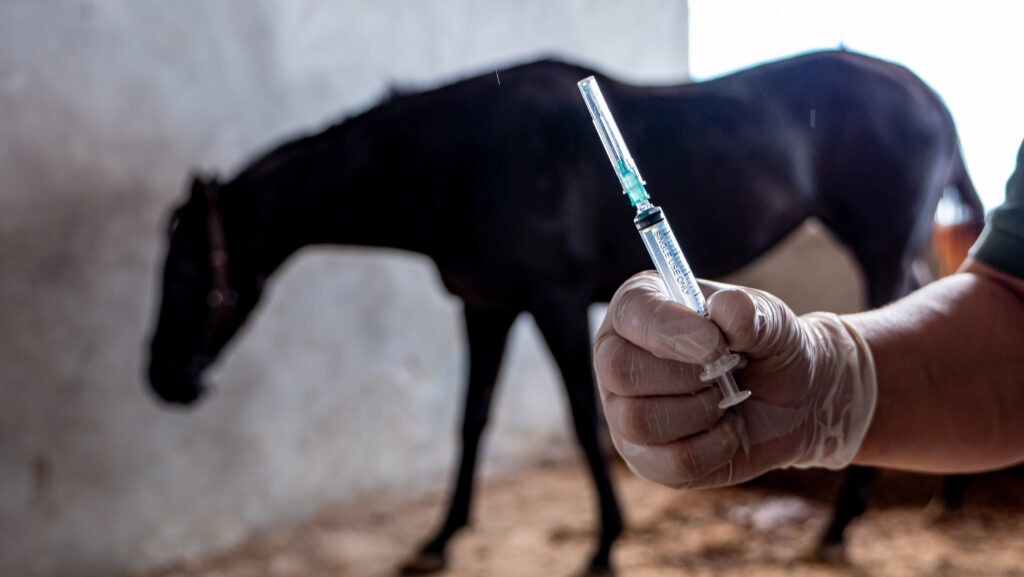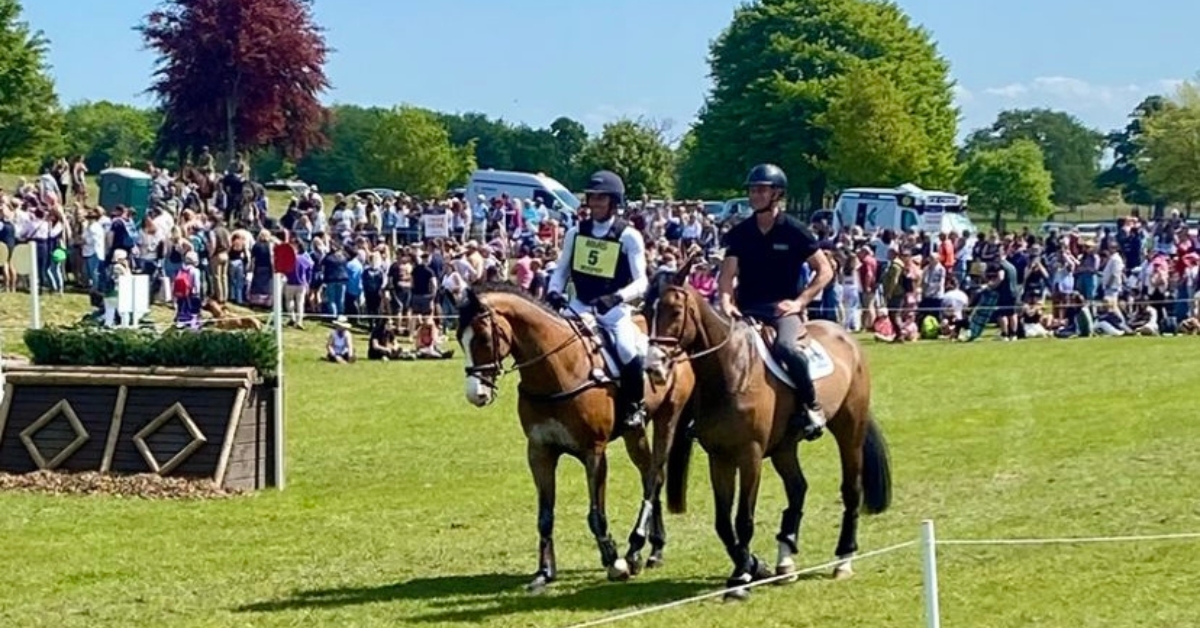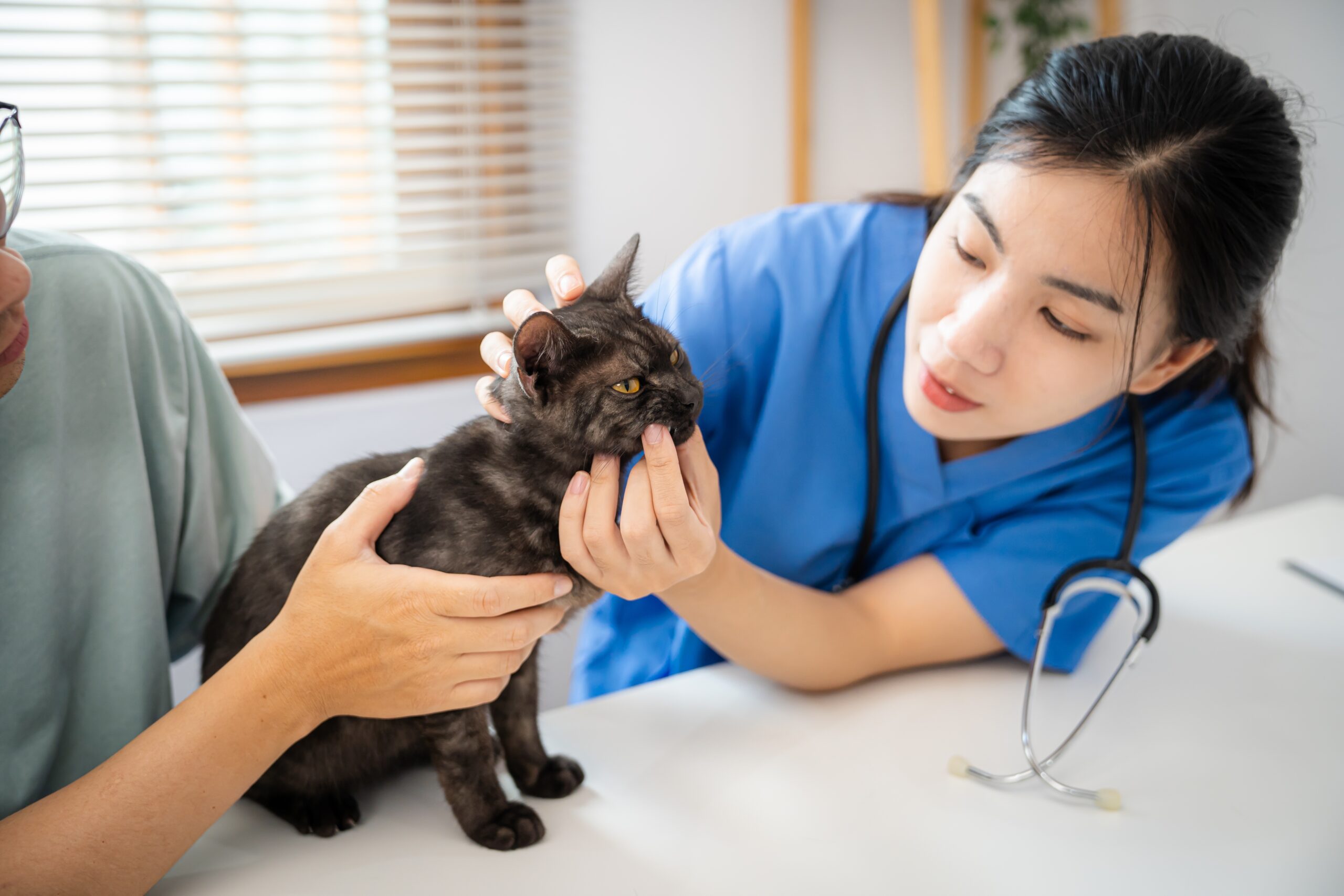You may hear people say ‘My horse had is hocks treated’ or ‘I had my horses joints injected’. This is a very broad term but what does it actually mean? We hear of horses getting injected, needing injections. Is there such a thing as too much and what are the risks involved?
Corticosteroid is a group of steroids with anti-inflammatory and healing properties. Corticosteroid is a synthetic version of the naturally occurring hormone Cortisol, which is produced in the body by the adrenal gland. A Vet would use this for treating lameness issues and has proven very successful in the management of Osteoarthritis. Some people get nervous when they hear the word ‘steroid’ however the type we hear in the media regarding abuse scandals and performance-enhancing drugs are part of the steroid sub group called Anabolic steroids, these kinds of steroids enhance weight gain and muscle development. Anabolic steroids are different to Corticosteroid.
Hyaluronic Acid (HA) is another option for treating joints that your vet may choose. You may have heard of Hyaluronic Acid being used in skin and beauty products on the telly. HA is a component of healthy joint fluid that helps with lubrication between the cartilage within the joint. The more lubrication and healthy cartilage tissue you have in a joint the more comfortably and freely the joint will move.
Interleukin-1 receptor antagonist protein (IRAP) is an anti-inflammatory treatment, most commonly used for the treatment of Osteoarthritis. This treatment slows down the progression of Osteoarthritis in the joint by blocking the receptors that cause inflammation. Platelet rich plasma (PRP) can be used to treat joints and soft tissues e.g. tendon. In simple terms, a blood sample is taken from the horse and processed in a lab to increase the number of platelets in the blood, thus, creating oxygen rich blood cells with better healing properties. These treatment options are usually more expensive than the standard treatments or Corticosteroid and HA. We would really only hear of PRP treatments being done on high performance Equine Athletes.

As with everything, there are some risks to be considered. Horses with pre existing conditions such as Equine Metabolic Syndrome (EMS) or Cushings may be a greater risk of developing Corticosteroid induced Laminitis and may not be a suitable candidate for this kind of treatment. Injecting Corticosteroid can trigger a sharp rise in Insulin and Glucose in the body, therefore causing such conditions to go into overdrive.
Infection is also a risk when treating a joint. Because of the nature of the steroids, they can suppress the bodies natural immune system and reduce the bodies’ ability to fight infection. Your Vet should ensure the injection site is thoroughly cleaned to reduce the risk of infection.
Ultimately, we all have the same goal, to keep our horses performing at their best, to elongate their performance careers for as long as possible, as safely as possible and to keep them comfortable. Sounds like an all win situation, right? Horse gets a bit sore and stiff as they get into their later years, inject away, no problems! WAIT! You must also consider that when treating joints with certain medications while you are treating the lameness issues now, what happens to the life span of the joint in the long term? Steroids can reduce the rate in which new, healthy cartilage cells develop. So, although your horse may get treatment now so he can perform at his best at the next competition, consider the overall picture and the long-term effects.
Equine sports albeit Racing, Showjumping, Eventing, Dressage etc. have become more physically demanding on the horse and rider. Races are run faster, horses are trained to a higher standard, jumps are bigger and wider, terrains are more testing, jumps are more solid, courses are more technical. There is more pressure on riders and Vets to have their top horses in fit condition to compete and with the generation we live in now, people want things instantly, phones are instant, ordering groceries with the click of button, Facetiming with someone in China is instant, I fear horses are not being given sufficient time to recover after an event or after injury. So what do we do? Treat with whatever you can to get the back in top form, without considering the welfare of the horse long term? With high performances horses, a lot of money can be at stake.
I understand the other side of the coin too, the economy must move forward, we all need to put food on the table, we all have the tax man breathing down our necks, business is business etc. but where do we draw the line. It is unfortunate that the industry has come to this, putting money first before welfare.


Share
Your subscription is 100% Free for our first year, No credit card details required.

The Judging Concerns That Keep Coming Back — And Why They Can’t Be Ignored Anymore We didn’t make it to

There are few sporting events that live up to the hype. Wimbledon? Too many strawberries. Cheltenham? Too many suits. But

British Veterinary Association publishes full response to Competition and Markets Authority’s proposed remedies for veterinary market for household pets. The